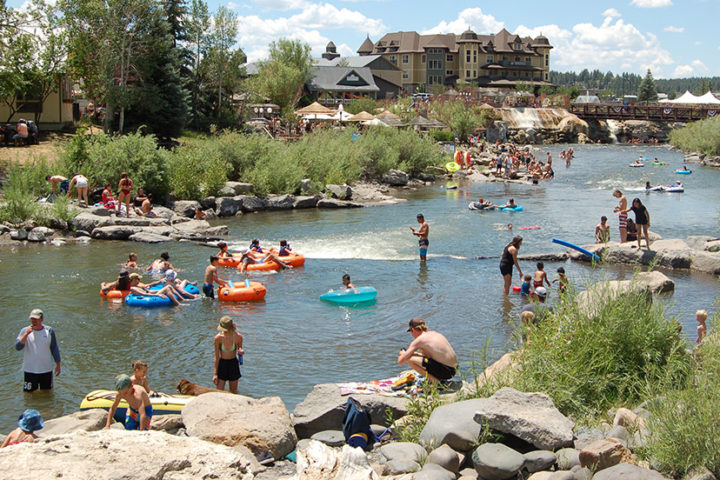I hope Dave reads this editorial.
Over the weekend, a Daily Post reader (not Dave) sent a link to a MarketWatch article re-published by Microsoft News. The article’s title:
‘We want to live in a small town where we can bike, hike and kayak — so where should we retire?’
The column begins like this:
Dear MarketWatch,
My wife and I will retire in 2024 and are starting to think about where we’d like to end up. Here are some of our parameters:
• Sell our current house and buy a house in a price range of $400,000 to $700,000.
• Love outdoor recreation like hiking, biking, kayaking.
• In or near a small town. College town is a bonus. In or near mountains is a bonus.
• Location: Mid-Atlantic is the first choice. Mountain West is good also.
• Weather: Four seasons. Not a terribly long winter. Not in the mega-drought zone.
Any and all suggestions are welcome!
Thanks,
Dave
Given that concise wish-list, MarketWatch columnist Silvia Ascarelli recommended three possible small towns:
Poughkeepsie, New York; Blacksburg, Virginia; and Pagosa Springs, Colorado.
Discussing small-town Pagosa Springs as an option, Ms. Ascarelli notes that we have a hot real estate market, and lots of places to recreate. Lots of hiking in the surrounding mountains. A river for kayaking. A nearby ski area.
But no college.
Yes, $400,000 to $700,000 is a reasonable price range for a house, in 2021, although the inventory is currently pitiful, at any price point. Especially below $400,000. But that all could change, by the time Dave and his wife retire in 2024.
Ms. Ascarella forgot to mention that Pagosa Springs been on the edge of the “mega-drought zone” for the past two decades. And judging by Dave’s preference for a “college town” he’s probably a Democrat. He and his wife might even drive an electric vehicle. Not sure if they’re the right fit for Pagosa?
Ms. Ascarella also didn’t mention… the tourists.
Some places on the planet are infested with disease-carrying mosquitos. Some places suffer through 115-degree summer temperatures. Some places are plagued by civil war.
I hear that Australia, following alternating periods of drought and excessive rainfall, has been over-run with swarms of mice, with no end to the infestation in sight.
From such plagues, Pagosa Springs as been immune.
But Pagosa has tourists.
A friend of mine made a comment, the other day, about our lack of housing for our local workforce… the workforce that serves the tourists… the tourism that forms the basis of our economy.
Let’s get one thing straight. Contrary to what you may have been told, tourism does not form “the basis” for our economy. It’s only a ‘part’ of the local economy, and not even an especially large part.
Hard to believe, during Fourth of July weekend.
According to Region 9 Economic Development District data, posted on their new, easy-to-read economic dashboard, Archuleta County has people working in 19 of the 20 Bureau of Labor Statistics employment sectors.
Pagosa’s hospitality sector employs about 349 people… out of a total employed workforce of about 6,862.
Healthcare employs 508 people; education employs 419; public administration provides 146 jobs; and construction employs 623 people. Add those four ‘non-tourism’ sectors and you get almost 1,700 workers…
…five times the number in the hospitality sector.
Yes, tourists do shop at Walmart, and at the second-hand stores, and at the liquor stores, and they use our utilities, and drive on our roads, etc. But the primary source of employment in Pagosa Springs arises from our full-time residents — especially, I would suggest, from our retirees, who have found their retirement paradise in a small town in the mountains, and who tend to be an older, wealthier demographic. (Hence, the large number of workers in the healthcare and construction sectors.)
You can view this data by choosing Archuleta County on the Region 9 website: https://www.region9edd.org/dashboard-workforce
The tourism industry has unfortunately created the illusion that they form the ‘core’ of the Pagosa economy, when they’re actually only a small part of it. The actual source of 80% of the employment here stems from services provided to our full-time residents. (That’s my rough estimate.)
But as everybody knows — especially, following a contentious national election in the midst of a global pandemic — once people start believing false information, it’s oh-so-difficult to get them to change their minds.
It’s especially difficult, when the community’s leadership spends nearly $1 million a year in taxes promoting tourism.
I’m not going to comment on which false information I personally happen to believe, concerning COVID and election security. I’m sure there’s deception going on, on both sides of those particularly controversial issues, and far be it from me to pretend I can discern the truth.
But I can report what I see with my own eyes, and hear with my own ears. And what I see and hear suggests that we have enough tourism, thank you, and it’s time to spend our limited tax money on more important things.
A government-funded online dashboard is a fine thing, and I’m confident that Region 9 does its level best to provide us with the very best data they can cobble together. They certainly do a better job of consolidating economic information than the Daily Post could ever hope to do.
What the Daily Post can do, that Region 9 cannot do, is raise questions about how the whole “economic development” process has been handled in Pagosa, these past couple of decades.
We can ask, “Do we have enough tourists yet?”


